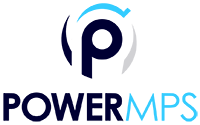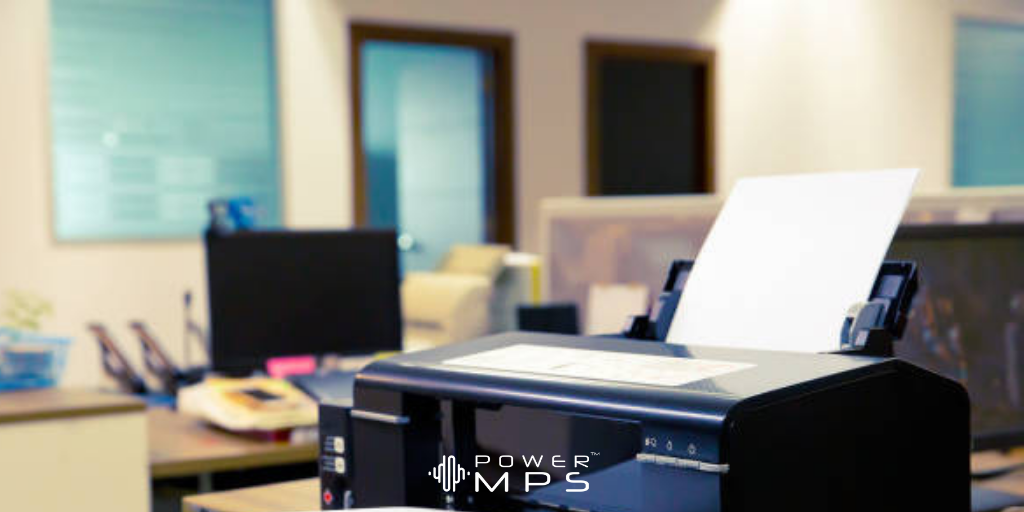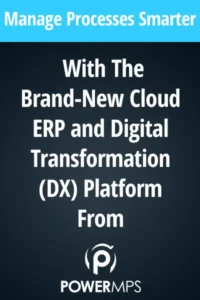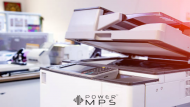The type of printer an office should use is just as important as the system on which those printers run. But unlike network and local printing, the decision is far less about security. Instead, it is far more about the use case of the business, including the number of pages printed, type of printing, speed required, and general budget. So, what is the difference between an inkjet and a laser printer? And how do you know which one your business needs?
Types Of Printers
When they think of an inkjet printer, most people imagine the small, clunky home printer that takes forever to spit out a page still sopping wet with ink. They are not wrong.
Inkjet printers duplicate the images from a digital document by spraying tiny dots of wet ink onto paper. Other than the heat produced by the movement and energy of the machine, there is no heat or drying mechanism involved in the printing process. So, the resulting inked image often remains wet to the touch for several minutes after printing.
On the other hand, laser printers print an entire page at once by using a photoconductive drum to create areas of static. This static pulls and holds particles of toner. Then the paper and toner are heated to bind them together. The result is a completely dry printed document. Fresh prints are often warm to the touch.
Speed And Functionality
Companies looking to service an entire office quickly and efficiently are often looking for a printer or printers that can produce a significant overall volume in a short amount of time. So it is hardly surprising that these businesses might immediately discount the perceived sluggish pace of inkjet printers.
However, recent developments in inkjet technology have made these machines more capable of meeting the pace of larger and more print-heavy offices. Entry-level and consumer inkjets are slow indeed. Even the fastest versions of these printers average somewhere around seven to eight pages per minute.
But manufacturers of higher-end inkjet printers are working to close that production gap quickly. Brother, for instance, has recently released an inkjet model that prints up to 22 pages per minute (ppm). Not to be outperformed, HP offers a line of printers with full-width printheads capable of producing print jobs at speeds up to 70ppm.
On the other hand, laser printers run at high speeds even in their more compact small and home office versions. The average machine usually prints at somewhere around 20 ppm or more. And, in addition to their speed, the dry formatting of a laser print allows additional functionality such as double-sided printing, stapling, and collating that may be lacking in an inkjet printer.
Print Quality
For some companies, print speed is not the only concern. Sometimes it is the quality of the print job that matters. Businesses that are heavily text-focused are more likely to be looking for a printing system that ensures clear, precise letters with a consistent delineation between foreground and background. Other companies use a large number of charts, icons, photography, or colored graphics. These color-heavy offices are more likely to focus on the vibrancy of colors, page coverage, and specialty paper.
These printing requirements create a clear delineation between the type of printer each business should consider. Laser printers, for instance, usually produce sharper text but are less reliable when it comes to bright colors. These types of printers are also limited to the kinds of paper they can use. All paper used in a laser printer is heat resistant and specially designed to properly bond with laser toner when heated. The laser printing process also requires a strict border edge, reducing the ability to “bleed” graphics or designs to the very edge of the paper.
Though less reliable when it comes to producing clean, crisp text, inkjet printers are exceptionally well designed for producing beautiful photography and graphic prints. They can also print on a wide variety of papers for added texture, volume, or tactile feel. In many cases, it is also possible to “bleed” graphics to the edge of the page using borderless output. And ink colors are designed to be vibrant, even when dry.
A Printer To Fit Your Budget
The final considerations in selecting a printer are the initial and ongoing costs of operation. The good news is that office-level inkjet and laser printers are very similar in price. Therefore, it is possible to find a model of either type that can fit within any particular budget. The actual costs are highly dependent on the intended use of the machine.
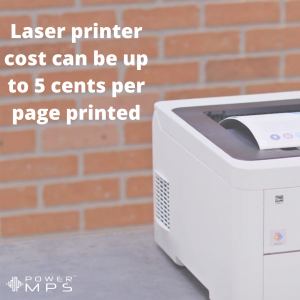 For instance, businesses who rarely print, rarely print color, or print large quantities of text are more likely to benefit from a laser printer. This cost savings is largely due to the fact that toner cartridges can usually average to less than a penny per print for black-and-white. In addition, while prices for color printing with laser printers can reach up to 5 cents per page, toner cartridges don’t dry out when they see long periods of disuse.
For instance, businesses who rarely print, rarely print color, or print large quantities of text are more likely to benefit from a laser printer. This cost savings is largely due to the fact that toner cartridges can usually average to less than a penny per print for black-and-white. In addition, while prices for color printing with laser printers can reach up to 5 cents per page, toner cartridges don’t dry out when they see long periods of disuse.
Businesses that print over 300 pages per month or print large quantities of colored documentation may want to invest in a newer, high-end inkjet printer. More significant print volumes help spread out the cost of the ink, running as low as 1 cent per page. Especially when printing in color, businesses can see significant cost savings when compared to equivalent laser prints.
Making The Choice
The final decision for the type of printer your business needs can be calculated through a thorough analysis of the company’s current printing practices. Fortunately, an experienced Managed Print Services (MPS) provider using systems like Power MPS can help your company evaluate your needs to give you the best options to fit your business requirements and budget. Whether your company needs all of the features of a laser printer or the vibrant and versatile qualities of an inkjet, Power MPS will help your MPS keep track of performance and ensure you get the most out of your printing investment.
